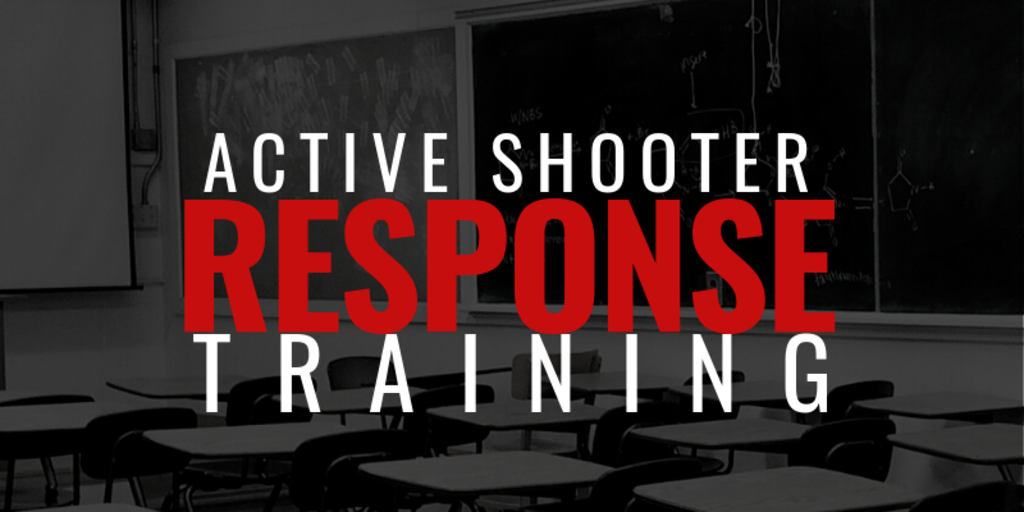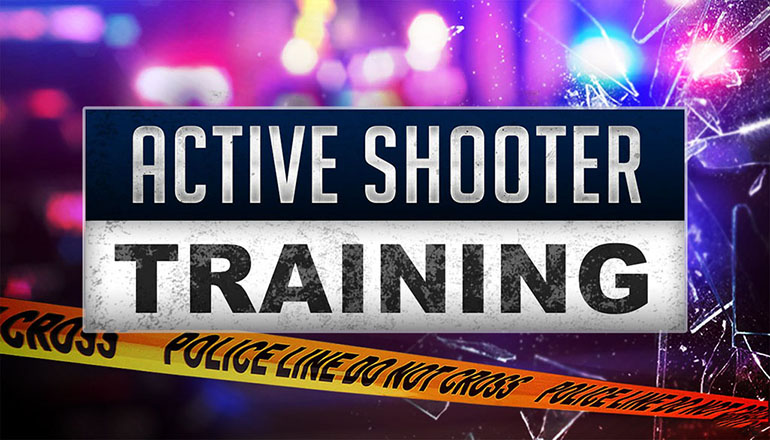The Vital Duty of Active Shooter Training in Enhancing Emergency Situation Action Techniques in Numerous Atmospheres
Energetic shooter training has emerged as a fundamental part in refining emergency feedback approaches across diverse setups, from instructional institutions to business settings. The performance of such training hinges on different variables, consisting of the specific context in which it is executed and the continuous dedication to renovation.
Value of Energetic Shooter Training
In an age noted by enhancing worries over public safety, the value of active shooter training can not be overemphasized. As cases of gun violence in public areas continue to rise, companies throughout numerous sectorsâEUR" instructional institutions, work environments, and public venuesâEUR" are acknowledging the requirement of preparing their employees and communities for such emergencies. Energetic shooter training outfits people with vital skills and knowledge to respond efficiently in serious scenarios, possibly decreasing casualties and conserving lives.
The training not only focuses on immediate response actions, such as emptying and sheltering in place, yet additionally promotes a culture of awareness and readiness. By engaging in realistic simulations and conversations, individuals can identify possible susceptabilities within their atmosphere and establish strategies for mitigating risks. Additionally, such training enhances interaction and sychronisation among staff member and first -responders, ensuring an extra unified technique during crises.

Secret Elements of Effective Educating
Effective active shooter training consists of numerous key parts that enhance preparedness and action capacities. Realistic scenario-based simulations are important. These workouts immerse individuals in high-stress scenarios that resemble potential active shooter events, enabling them to practice decision-making and physical actions under pressure.
In addition, training has to consist of a complete understanding of interaction methods. Individuals need to be fluent in just how to communicate critical information to police and fellow individuals during an incident. This includes making use of emergency situation signals and comprehending the hierarchy.
One more vital element is the consolidation of mental health awareness. Training should resolve the psychological effect of energetic shooter circumstances, gearing up individuals with dealing techniques and resources to support their mental health post-incident.
In addition, normal refresher courses are vital to make certain that abilities remain sharp and knowledge is current. This continual education reinforces the importance of readiness and promotes a culture of security within organizations.
Training for Various Settings
Active shooter training must be customized to the particular settings in which individuals operate, as each establishing presents special challenges and characteristics. For example, training in a corporate workplace will vary considerably from that in a school, shopping mall, or medical care facility. Each environment requires a customized approach that takes into consideration elements such as format, populace density, and readily available escape paths.
In schools, training programs should highlight lockdown treatments, go to this website communication methods with police, and techniques for shielding students. On the other hand, in company settings, training may concentrate on evacuation techniques, identifying suspicious behaviors, and utilizing readily available sources for self-defense or shelter-in-place situations.
Additionally, public venues like malls or showing off occasions call for extensive crowd administration approaches, with a focus on rapid reaction sychronisation amongst security personnel and local legislation enforcement.
In health care atmospheres, training needs to resolve specific vulnerabilities, such as the presence of clients who may require immediate support. By comprehending the unique qualities of each atmosphere, companies can establish efficient training modules that improve preparedness and improve overall safety, guaranteeing that individuals are geared up to respond appropriately in varied situation scenarios.

Structure a Society of Understanding
Producing a culture of recognition is essential to enhancing precaution in any type of environment, as it encourages people to identify prospective risks and react proactively. This culture necessitates continual education, open interaction, and the combination of security protocols into daily regimens.
Organizations needs to prioritize active shooter training as component of their overarching safety and security method, making sure that all personnel recognize the particular threats connected with their atmosphere. Regular training sessions grow vigilance and familiarity with emergency procedures, motivating people to continue to be alert to unusual habits or circumstances.
Additionally, cultivating a culture of understanding includes developing an environment where reporting suspicious activity is both encouraged and stabilized. active shooter training. Staff members must feel comfortable sharing their worries without anxiety of retribution. This can be achieved through clear channels of communication and helpful management
Furthermore, involving in area collaborations can enhance recognition past business limits, advertising a shared obligation for security. Efforts such as workshops, drills, and informative sessions can even more improve collective watchfulness. Ultimately, developing a culture of awareness not only prepares individuals for potential crises go to this website yet additionally reinforces the total strength of the company versus dangers.
Examining Training Effectiveness
While regular training sessions are essential for preparedness, evaluating their performance is equally important to ensure that employees are furnished with the needed skills and knowledge to react properly in case of an active shooter scenario. Assessment procedures need to include both qualitative and quantitative analyses to determine the impact of training on response capacities.
Surveys and responses from individuals can offer valuable understandings into the training's importance and applicability. Furthermore, conducting sensible drills and simulations allows companies to observe real-time decision-making and team effort under pressure. Assessing the results of these workouts assists identify staminas and areas for enhancement.

Entailing stakeholders, consisting of police and emergency -responders, in the analysis process can boost trustworthiness and give a comprehensive perspective on training effectiveness (active shooter training). Eventually, an organized analysis strategy ensures that active shooter training continues to be a crucial element of an organization's emergency feedback technique, promoting a much safer setting for all
Verdict
Active shooter training is vital in fortifying emergency response strategies throughout diverse environments. Inevitably, the application and evaluation of efficient training programs contribute substantially to reducing the influence of energetic shooter situations, consequently safeguarding this contact form lives and boosting community durability.